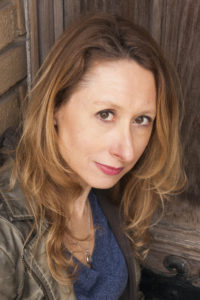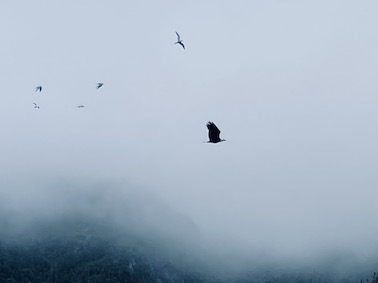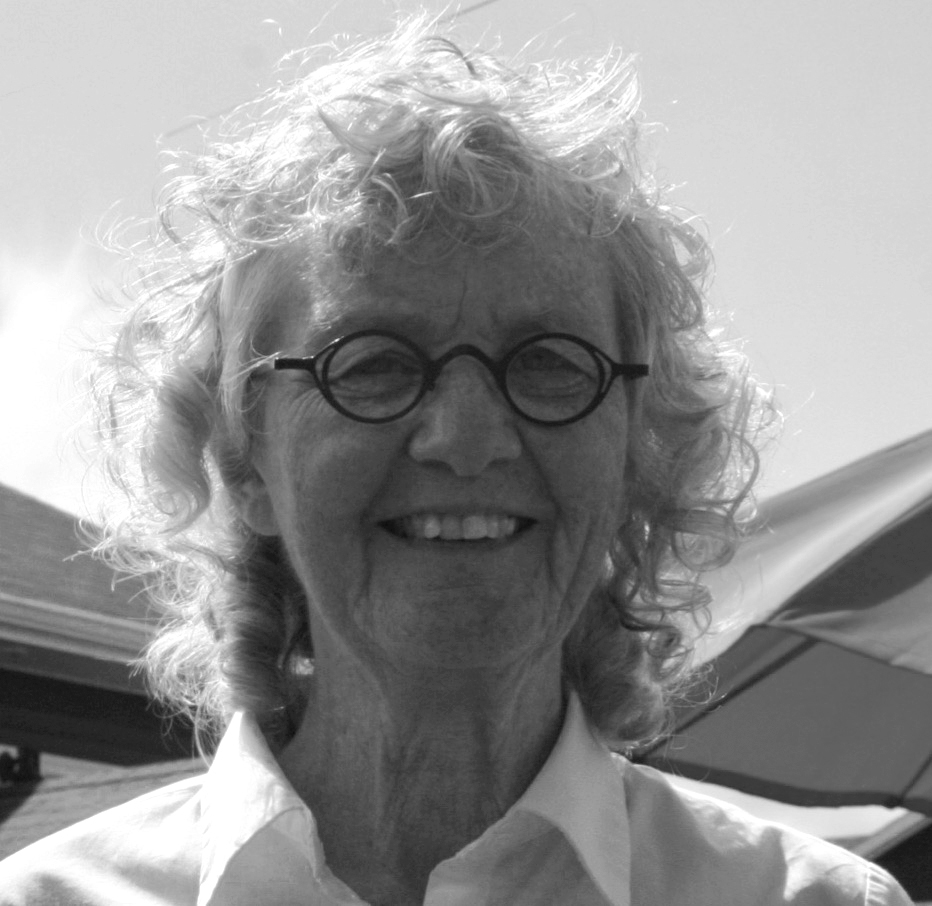NL Q and A: Elisabeth de Mariaffi
April 2018
Elisabeth de Mariaffi is the critically acclaimed author of two previous books: the Scotiabank Giller Prize-nominated short story collection How to Get Along with Women and the literary thriller The Devil You Know. Her short stories and poetry have been widely published in Canada. Her newest novel, Hysteria, was released in March 2018.
 What inspired your new novel, Hysteria?
What inspired your new novel, Hysteria?
I usually come to new stories with either a first line or a first image in mind. With Hysteria, it was an image – almost a moment, really. A young mother, lounging on a wooden raft in a quiet pond with her child, suddenly is witness to a strange and unexplainable event. It’s a hot and lazy day, the woman is half-dozing. She looks up to see a second child, a strange little girl, has appeared out of nowhere. There is no one with her. The girl pulls herself up out of the water, chattering to the woman’s son, as the mother tries to figure out where she might have come from. A moment later, the girl steps off the raft again – and seems to skip lightly, eerily, across the water’s surface before diving down again. She never resurfaces. The mother, the only adult there, clutches her own child in fear. But she is also left to question her own senses: did this actually happen? Did she see what she thinks she saw? And if so, has the little girl drowned as the woman looked on? That scene, or moment, does not appear until the second chapter of the book, but it was the scene I was writing toward. By the time I got to write it, I was hooked on my characters and what might happen to them.
How is it different from your earlier writing?
For one thing, Hysteria is the first story I’ve written that is set in a past that is historical to me – meaning, I didn’t live through it. The story is set in 1950s upstate New York. Previously, my short stories were all either contemporary or set in a near-past, within my lifetime. My first novel, The Devil You Know, was set in 1990s Toronto and in many ways was an intimate portrait of the city of my birth at the time that I was coming of age. So I had to do a very different kind of research – and more of it – for Hysteria. I spent a lot of time reading about the beginning of the mood-altering drug industry in America in the 1950s, and even went down to the Finger Lakes (where the book is set) for a week or so during a very hot month of June.
What are your professional goals?
While I think as artists we do revisit our themes repetitively, maybe even compulsively, I always want to challenge myself with doing something different, whether that’s in genre or approach. Hysteria felt quite different for me, in tone, even if in many ways it revolves around the themes that I am drawn to: women, power, fear. It’s a longer book, it builds very differently, both in voice and pacing. I started out publishing in Canadian magazines as a poet; my MFA thesis is in poetry. I moved from there to short stories, and then to novels, and now in the last two years I’ve been working in film, on screenplays. I always want to feel that challenge, that sharp learning curve.
Which artists – not necessarily literary – have influenced you?
Where Hysteria is concerned, most consciously the writers James Salter (American), Sarah Waters (British), and Alice Munro (Canadian, of course.) And Alfred Hitchcock, the whole novel is very Hitchcock in tone, and that is just how I pictured the main character, Heike Lerner – as a Hitchcock blonde. I love the post-impressionists, but especially everything that came after. I love Sonia Delaunay. I have a real affinity for poster art of the 20th century, so you can see the post-war influence there, as well.
Which artists – not necessarily literary – do you feel are underrated?
Well, I don’t know about underrated. But Sonia’s husband, Robert Delaunay, may have had more of the limelight, certainly in their lifetime. They were kind of a power couple, though, and created their own aesthetic – Orphism – it was really Sonia that began to think in those terms, she applied the kind of design she’d used in making a baby’s quilt to her painting. She also designed stage costumes, she worked in lots of media and lots of venues. I would be hard-pressed to call her underrated, but maybe less known than she should be. And when I was looking for music of the 1950s, there are all these girl groups that never got a hit single, because they didn’t sound like the Andrews Sisters, so the promotion machine wasn’t there for them. Like girl doo-wop, Shirley Gunter and the Queens, The Debs. The sound is much more playful, much sexier, than what girl groups generally got to do then.
What do you do for fun?
I love being outdoors, I think sometimes I should have become a naturalist or trail keeper of some kind. I love to travel. We have a large family – four children between us – and I’m really happiest when everyone is together.
What’s your favourite place?
Doesn’t it depend on the mood? Or time of year? Maybe not. I cross country ski in winter, and hike in summer, and I have a favourite cottage we sometimes go to in Ontario, that belongs to the family of one of my oldest friends. So I suppose my favourite place is the woods.
What’s your favourite place to work?
I’m mostly quite regimented about work, but it’s good to break it up. I rent an office here in St John’s, and do the lion’s share of my work there. Of course, as Writer in Residence, I’ve had an English department office this semester, too. I work at my dining table or kitchen table at home. I work in airports and on planes. If I have to, I work in hotel rooms. But the dreaming, or the sort of expansive imagining part of my work, of early drafting, that happens in your head mainly, so it’s good to get out walking.
Do you have a work routine?
Most days I’m at my office by 9:30, but I get bored if every day is the same so I can only do the same routine for 3-4 days and then something has to change. Either I work on something very different for a day, or I change location. Every day has to be broken up somehow – a walk, or a run, or some yoga. Sitting still is the hardest part of my job.
What scares you about your work?
Well, I don’t get scared of what I’m writing, even when the story gets frightening, because as the writer I control it. Probably what scares me most about the kind of work I do is the fact that it’s basically precarious employment, and I am always, always aware of that. That’ s why supporting our arts councils, at all levels – municipal, provinicial, national – is so important. Arts council funding provides great stability, and that financial stability is what allows us to make the work.



